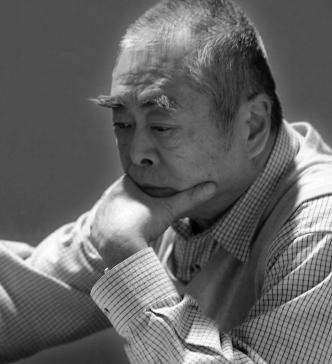HsiaoCHIN
About
For Hsiao Chin art is a path of growth and knowledge, as well as a spiritual journey through time and space, which transcends any geographical or cultural limits. Hsiao Chin’s work perfectly integrates the spiritual practices of the East and the artistic experimentation and art of the West. On the one hand his paintings may suggest a written page in which the artist calls upon Eastern symbolism, creating a message of subtle signs, almost ideograms, that alternate with geometric shapes evoking atavistic and shared meanings (circles, squares, spirals...), yet on the other, his bold choice of colours bursting with energy, his frenetic and radiant brush strokes, or those more fluid and calibrated, appear “Western”, with an occasional glimpse of a Rothko, a Matisse or a Malevich…
Hsiao Chin was born in Shanghai in 1935. After his first art studies, in 1956 he was involved in founding the Ton-Fan group of abstract painters. A scholarship established by the Spanish government enabled him to travel to Madrid and Barcelona, where in 1957 he held his first solo exhibition and a collective show dedicated to the Ton-Fan group.
At the end of the 1950s he moved to Milan, where he began to exhibit regularly at Giorgio Marconi’sgallery.
In 1961, together with Antonio Calderara, he founded the movement "Punto", joined by artists of the international avant-garde. With results closer to the style of colourfield abstraction, his paintings are expanses of fluid colour arranged into vibrant, incorporeal surfaces animated by energy from within the fields of colour.
After long periods in London, Paris and New York, Hsiao returned to Milan in 1971 and began to devote himself to teaching, first at the Istituto Europeo di Design, then at the Accademia di Belle Arti di Brera.
In 1988 Studio Marconi gave him his first major retrospective. The following year he began a series entitled From the Beijing Spring to the Tiananmen Massacre, inspired by the dramatic events of 1989, whereas the Great Threshold cycle, which he began in 1990-91, arose from a reflection on life and death after the loss of his daughter Samantha.
Among his major exhibitions in recent years have been retrospectives in Taichung (1992), Taipei (1995), in Milan (2002) at Spazio Oberdan, Fondazione Mudima, Giò Marconi and the Lattuada gallery; at Beijing National Museum of Art (2006) and at the Bovisa Triennial in Milan (2009). In 2011 the Académie Royale des Beaux-Arts and the Musée d’Art Moderne et d’Art Contemporain in Liège held a large exhibition of his work. In 2012 he exhibited at Taipei Fine Arts Museum, and in 2013 at the Fondazione Marconi with the exhibition Hsiao Chin. Works on Paper. He has since continued an intense programme of exhibitions in Italy and abroad. Among these has been: Hsiao Chin. Un Viaggio attraverso l’universo, at Galleria Robilant & Voena, Milan, the solo show at the National Taiwan Museum of Fine Arts, Taichung (Taiwan) in 2015, and Hsiao Chin. The Universe Energy at Die Galerie, Frankfurt in 2016.
Hsiao Chin died on June 30 2023.
Hsiao Chin was born in Shanghai in 1935. After his first art studies, in 1956 he was involved in founding the Ton-Fan group of abstract painters. A scholarship established by the Spanish government enabled him to travel to Madrid and Barcelona, where in 1957 he held his first solo exhibition and a collective show dedicated to the Ton-Fan group.
At the end of the 1950s he moved to Milan, where he began to exhibit regularly at Giorgio Marconi’sgallery.
In 1961, together with Antonio Calderara, he founded the movement "Punto", joined by artists of the international avant-garde. With results closer to the style of colourfield abstraction, his paintings are expanses of fluid colour arranged into vibrant, incorporeal surfaces animated by energy from within the fields of colour.
After long periods in London, Paris and New York, Hsiao returned to Milan in 1971 and began to devote himself to teaching, first at the Istituto Europeo di Design, then at the Accademia di Belle Arti di Brera.
In 1988 Studio Marconi gave him his first major retrospective. The following year he began a series entitled From the Beijing Spring to the Tiananmen Massacre, inspired by the dramatic events of 1989, whereas the Great Threshold cycle, which he began in 1990-91, arose from a reflection on life and death after the loss of his daughter Samantha.
Among his major exhibitions in recent years have been retrospectives in Taichung (1992), Taipei (1995), in Milan (2002) at Spazio Oberdan, Fondazione Mudima, Giò Marconi and the Lattuada gallery; at Beijing National Museum of Art (2006) and at the Bovisa Triennial in Milan (2009). In 2011 the Académie Royale des Beaux-Arts and the Musée d’Art Moderne et d’Art Contemporain in Liège held a large exhibition of his work. In 2012 he exhibited at Taipei Fine Arts Museum, and in 2013 at the Fondazione Marconi with the exhibition Hsiao Chin. Works on Paper. He has since continued an intense programme of exhibitions in Italy and abroad. Among these has been: Hsiao Chin. Un Viaggio attraverso l’universo, at Galleria Robilant & Voena, Milan, the solo show at the National Taiwan Museum of Fine Arts, Taichung (Taiwan) in 2015, and Hsiao Chin. The Universe Energy at Die Galerie, Frankfurt in 2016.
Hsiao Chin died on June 30 2023.
















